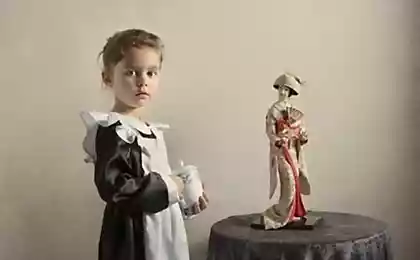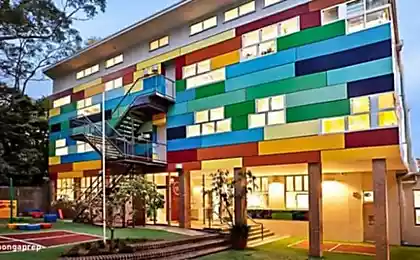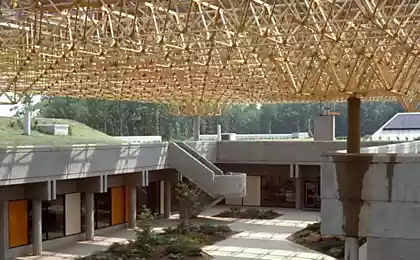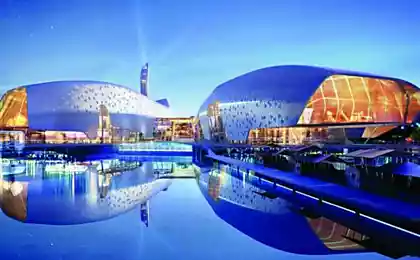272
Bringing Schools Closer to Nature – Sustainable Development Education Center in Romania
Through the teacher of the Faculty of Geography of the University of Bucharest, Ms. Mioara Klius, we received news about the project “Nature in the Schoolyard”, implemented by the Educational Center for Sustainable Development, the purpose of which was to restore the schoolyard at the Geo Bogza gymnasium in Balan, Hargita. (Figure 1). With the financial support of the Partnership Fund and through the MOL-Romania Green Plants program, as well as with the assistance of two partners - the school itself and the city hall, the project attracted about one hundred volunteers and reached the size of 11,168.6 Romanian lei (about 2,500 EUR).
Figure 1 - Plan of territorial planning in the schoolyard
" The extinction of Russia is more than a million a year. Example. The children went to school and after a year, 20% of students already have heart problems. By the end of primary school, 60%. By the end of high school, almost 90% of children have... ?
As in almost all schools in Romania, the Geo Bogza High School was empty, covered with shattered asphalt and stone, but thanks to the work of volunteers from the Association of the Educational Center for Sustainable Development, this spring the area around the school was completely transformed and, one might say, became close to nature. In particular, it acquired a beautiful aesthetic appearance, thanks to the improvement of 1275 square meters of land, on which more than 800 square meters of lawn were sown, more than 137 trees and shrubs were planted, as well as 100 species of flowers. In Figure 2 you can see the difference between the view of the schoolyard before and after the beautification.
Figure 2 - Schoolyard before and after improvement
This concept of space improvement is unique to our country, aiming to create an outdoor learning space surrounded by educational materials that can be touched. Now, in a new "class" surrounded by a hedge, in the center stands a "book" of wood slabs, on which during lessons you can put a wooden panel replacing a table, a pedestal with a desk and a teacher's chair, and seven wooden benches for students, which were named after the seven days of the week. (Figure 3).
Figure 3 - Class in the open air
In addition, spaces have been created dedicated to some subjects that can be studied outdoors. For example, biology has found its own “corner”, something like an “insect hotel”, where four habitats are created: hay, wood, bricks and roots with soil. (Figure 4).
Figure 4 - Biology Corner
In addition, biology, as the main science of the living, also won the water space, where a small pond was dug, surrounded by ferns, aquatic plants, mosses and willows (Figure 5).
Figure 5 - Waterlands
Figure 6 - Corner of Geography
" The School of Academician Mikhail Petrovich Shchetinin is an experimental general education school established in its current form in 1994 in the village of Tekos, Krasnodar Territory. Figure 7 - Corner of Mathematics
Among other things, the new concept of an eco-school should give students the opportunity to recuperate and reconnect with nature. To do this, sensory “healing” paths for sensory perception were laid around the schoolyard, about 100 m long, 1.5 m wide and with a sequence of eight different natural materials: grass, sand, pine cones, stones, thin branches, logs, moss and sawdust (Figures 9 and 10).
Figure 8 - Touch track (stone coating)
Figure 9 - Touch track (coating of pine cones)
On these paths, students and teachers can walk barefoot and feel the tactile difference between materials, as well as enjoy the therapeutic effect of such a walk. The area was equipped with three wooden boxes for selective waste collection and wooden parking for bicycles (Figure 10).
Figure 10 - Wooden bicycle parking
Figure 11 - Youth at work in the schoolyard
Figure 12 - Work on the improvement of sensory tracks
This fall, the school board will approve the schedule of classes in the new landscaped area and will invite teachers and students from other educational institutions in the city to be able to appreciate the benefits of such a space.
We congratulate the members of the Association of the Education Centre for Sustainable Development on their first initiative and wish them to achieve new results and create bright, wonderful learning spaces for Romanian schools.
Source: www.ecology.md
Figure 1 - Plan of territorial planning in the schoolyard
" The extinction of Russia is more than a million a year. Example. The children went to school and after a year, 20% of students already have heart problems. By the end of primary school, 60%. By the end of high school, almost 90% of children have... ?
As in almost all schools in Romania, the Geo Bogza High School was empty, covered with shattered asphalt and stone, but thanks to the work of volunteers from the Association of the Educational Center for Sustainable Development, this spring the area around the school was completely transformed and, one might say, became close to nature. In particular, it acquired a beautiful aesthetic appearance, thanks to the improvement of 1275 square meters of land, on which more than 800 square meters of lawn were sown, more than 137 trees and shrubs were planted, as well as 100 species of flowers. In Figure 2 you can see the difference between the view of the schoolyard before and after the beautification.
Figure 2 - Schoolyard before and after improvement
This concept of space improvement is unique to our country, aiming to create an outdoor learning space surrounded by educational materials that can be touched. Now, in a new "class" surrounded by a hedge, in the center stands a "book" of wood slabs, on which during lessons you can put a wooden panel replacing a table, a pedestal with a desk and a teacher's chair, and seven wooden benches for students, which were named after the seven days of the week. (Figure 3).
Figure 3 - Class in the open air
In addition, spaces have been created dedicated to some subjects that can be studied outdoors. For example, biology has found its own “corner”, something like an “insect hotel”, where four habitats are created: hay, wood, bricks and roots with soil. (Figure 4).
Figure 4 - Biology Corner
In addition, biology, as the main science of the living, also won the water space, where a small pond was dug, surrounded by ferns, aquatic plants, mosses and willows (Figure 5).
Figure 5 - Waterlands
Figure 6 - Corner of Geography
" The School of Academician Mikhail Petrovich Shchetinin is an experimental general education school established in its current form in 1994 in the village of Tekos, Krasnodar Territory. Figure 7 - Corner of Mathematics
Among other things, the new concept of an eco-school should give students the opportunity to recuperate and reconnect with nature. To do this, sensory “healing” paths for sensory perception were laid around the schoolyard, about 100 m long, 1.5 m wide and with a sequence of eight different natural materials: grass, sand, pine cones, stones, thin branches, logs, moss and sawdust (Figures 9 and 10).
Figure 8 - Touch track (stone coating)
Figure 9 - Touch track (coating of pine cones)
On these paths, students and teachers can walk barefoot and feel the tactile difference between materials, as well as enjoy the therapeutic effect of such a walk. The area was equipped with three wooden boxes for selective waste collection and wooden parking for bicycles (Figure 10).
Figure 10 - Wooden bicycle parking
Figure 11 - Youth at work in the schoolyard
Figure 12 - Work on the improvement of sensory tracks
This fall, the school board will approve the schedule of classes in the new landscaped area and will invite teachers and students from other educational institutions in the city to be able to appreciate the benefits of such a space.
We congratulate the members of the Association of the Education Centre for Sustainable Development on their first initiative and wish them to achieve new results and create bright, wonderful learning spaces for Romanian schools.
Source: www.ecology.md























